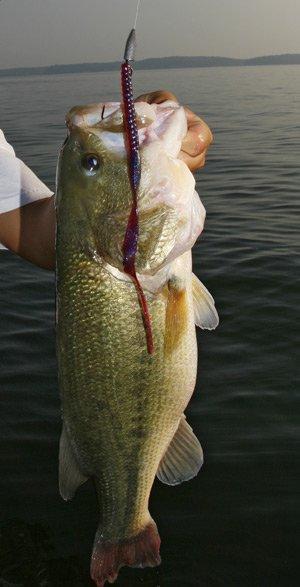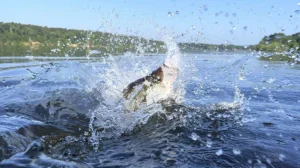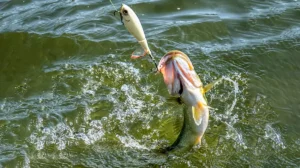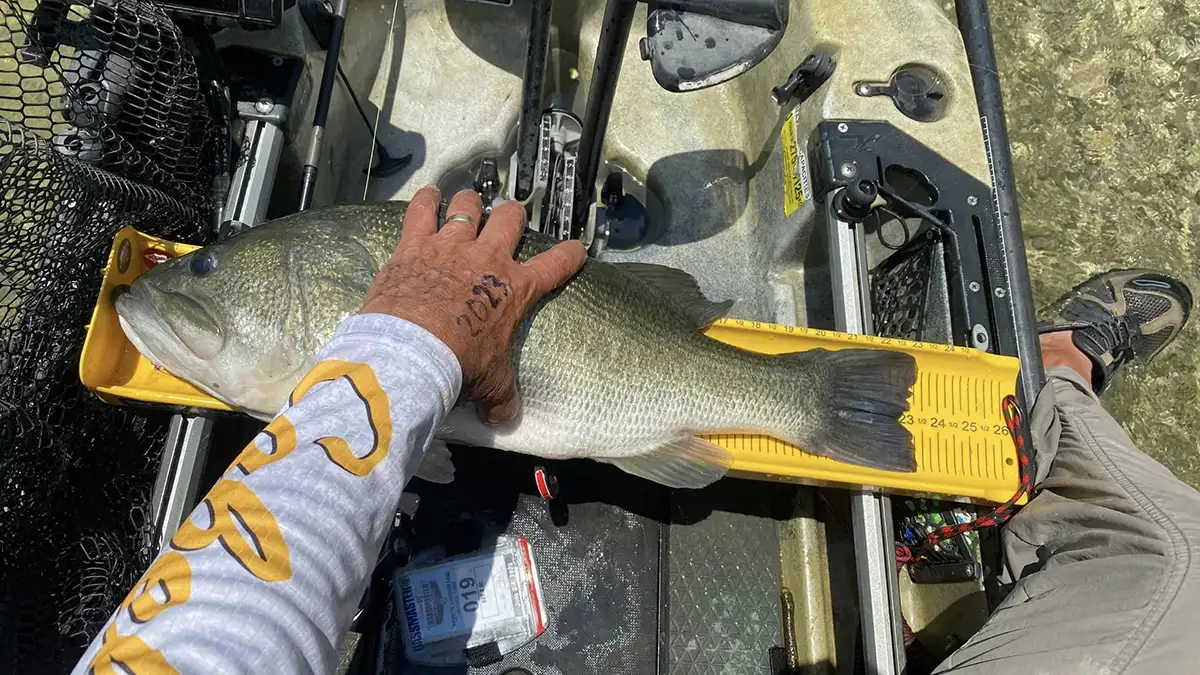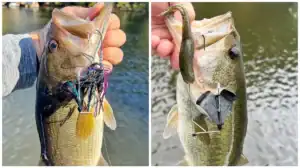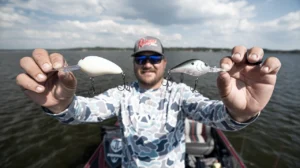From north to south bass are in all phases of the spawn and many of the central region lakes now have them moving to deep water. Savvy anglers know that when they move deep big deep diving crankbaits, football head jigs and big worms are the primary baits to catch these post spawn and up feeding bass.
We all have our favorites for deep water fishing but the Zoom Ol’ Monster Worm has stood the test of time and is a mainstay for our fishing when they move deep. This is a very special worm as it combines the correct profile, tapered ribbon tail and the best colors that Zoom has a history of providing. We particularly like plum, plum apple and red shad green for our fishing.
We like to use a long, fairly stiff rod, like a 7’3 or 7’6 in medium heavy combined with a high speed reel of 6.4: 1 or greater for this technique. We have been testing the new Halo 7’6 medium heavy with a Lews Tournament Speed Spool 7.1:1 reel spooled with Seaguar AbrazX and Gamma Fluorocarbon line and are excited about the results so far. We always use a matching Eco Pro Tungsten weight, 3/8 or heavier, and a Gamakatsu offset EWG 5/0 hook. We really like the bite to tell us if the weight should be pegged or not and always use a stop for pegging. For rocks and pea gravel we do not normally peg the weight but in heavy cover pegging seems more effective and we get less hang ups.
Using electronics is critical and side scan can help narrow you in on the schools. Long casts, letting the bait fall all the way to the bottom, with short hops and shakes seems to be most effective. We rig the hook with the worm bend facing up on the flat side of the Ol’ Monster most times but if you like to swim the bait it works better rigged with the flat side down. Manage your line carefully and re-tie often with this technique. Start on shallow drops, 8-14 feet, in the mouths of pockets and move out to creek and river ledges as water temps warm. Always good to look for schools of shad as you explore. Generally fish will be in deep water in our area when water reaches 72 degrees or higher
A general rule of thumb is darker worms in dark water and lighter shades in clearer water. We like darker colors on cloudy days too.
